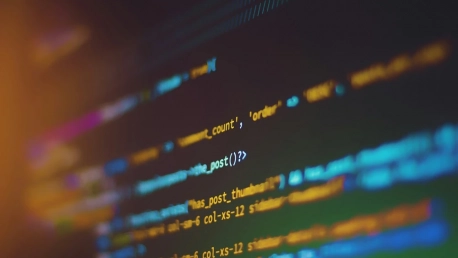Cybersecurity threats have dramatically evolved, transitioning from brute force to craftier methods that conventional defenses often miss. These advanced tactics are challenging to detect, as distinguishing malicious from harmless actions requires keen insight into each event’s context and underlying intent. This complexity makes cybersecurity akin to identifying a single dangerous needle in a haystack of harmless ones. As a response to these cunning strategies, traditional detection methodologies are no longer enough. Cybersecurity now requires sophisticated data analytics and increased reliance on automation to combat these subtle, yet potent threats effectively. The arms race in the digital realm demands that defenders not only adapt to but anticipate the stealthy moves of adversaries to protect our digital infrastructure.
The Rise of Contextual Cyber Threat Analysis through Automation
Given the intricate nature of these advanced threats, automation has become a key player in cybersecurity. It serves as a force multiplier, equipping security analysts with the tools needed to efficiently differentiate between harmless activity and potential threats. Automated systems provide an essential layer of contextual enrichment, allowing for quick and precise dissection of events. This is crucial, particularly when dealing with voluminous data where manually identifying suspicious behavior could be like comparing one hay-colored needle to another in the proverbial haystack.
The Complex Landscape of Modern Cyber Threats
As cyber threats evolve, their complexity leads to significant security incidents, such as data breaches witnessed by platforms like MoveIT and GoAnywhere. These events highlight the critical need for rapid detection of various cyberattack stages, including command and control (C2) communications, unauthorized access, escalated privileges, and data exfiltration efforts. Employing automation and advanced data analytics is crucial in uncovering subtle signs of cyber compromise, particularly when dealing with zero-day vulnerabilities, which can catch organizations off-guard and unprepared for sophisticated cyber onslaughts. The agility in identifying and responding to such vulnerabilities is a key aspect of a robust cybersecurity strategy, ensuring potential breaches are managed before they escalate into major crises.
AI and LLMs: A Double-Edged Sword for Cybersecurity
AI and machine learning models such as LLMs (Large Language Models) present a paradox within cybersecurity. While these technologies empower professionals to devise more effective defensive measures, they equally provide threat actors with new methods to craft complex and convincing phishing emails, created by tools such as GenAI. This arms race between cybersecurity professionals and cybercriminals necessitates robust automation and analytics, ensuring the defense stays ahead of the sophisticated tactics employed by these advanced persistent threats.
Counteracting Human Error with Automation in Cybersecurity
Human error is an inevitable factor leading to potential exploits in cybersecurity. Automation emerges as a crucial defense mechanism by assuming control of tasks that are repetitive and prone to human mistakes. This shift not only diminishes the likelihood of human neglect but also streamlines the process of responding to incidents. Automation serves as a force-multiplier for human analysts, addressing human weariness and cognitive biases that could otherwise affect imperative security decisions. When automation handles tasks that demand precision and consistency, cybersecurity personnel can focus on more complex and analytical aspects of protecting digital assets. This synergy between technology and human expertise forms a robust barrier against cyber threats, utilizing the best of both worlds to maintain robust security protocols. By integrating automation in cybersecurity strategies, organizations can achieve a more proactive and resilient approach to safeguarding their information and systems.
The Challenge of Integrating Data Analytics in Cybersecurity
Incorporating data analytics into cybersecurity operations introduces several challenges. Organizations often grapple with threat prioritization, having to make precise judgments about where to direct attention and resources amidst an ever-expanding threat landscape. Moreover, the vast array of detection content, spanning commercial to open-source intelligence, requires careful navigation to devise strategies that meet specific needs. Qualifying a spectrum of protective measures, especially in compliance with frameworks like MITRE ATT&CK TTPs, can be daunting, while the continued fine-tuning of data analytics tools remains a persistent effort.
AI and Human Analyst Synergy: The Future of Cybersecurity
The cybersecurity landscape is evolving, with AI tools becoming invaluable allies to human analysts. These intelligent systems are set to transform the way security alerts are filtered and analyzed, which in turn will reshape the duties of cybersecurity professionals. As AI starts to undertake routine analysis, it will enable analysts to pivot towards more strategic roles. They will be tasked with making high-level decisions and dealing with intricate mitigation strategies. This synergy between AI and humans will enhance the efficiency and effectiveness of cybersecurity operations. Human experts will be able to leverage AI to quickly identify and respond to threats, allowing them to apply their skills to the more nuanced aspects of security that machines have yet to master. This partnership heralds a new era in cybersecurity, where human creativity and strategic thought are bolstered by the speed and precision of artificial intelligence.
Cultivating Expertise in Data Analytics and Automation for Cybersecurity Professionals
To thrive in the evolving world of cybersecurity, experts must cultivate a mix of inquisitiveness and hands-on experience with modern technologies. Delving into data analytics and embracing automation equips one with the tools to develop cutting-edge defenses and bolster an organization’s protections against increasingly sophisticated cyber threats. Actively experimenting with these technological advancements enables cybersecurity professionals to navigate the complexities of the digital realm with finesse. By continually integrating new knowledge and skill sets into their repertoire, they maintain the adaptability needed to counter the relentless progression of online risks. This proactive approach to learning and application is crucial for staying at the forefront of cybersecurity innovation and safeguarding against the myriad of challenges in the digital space.









